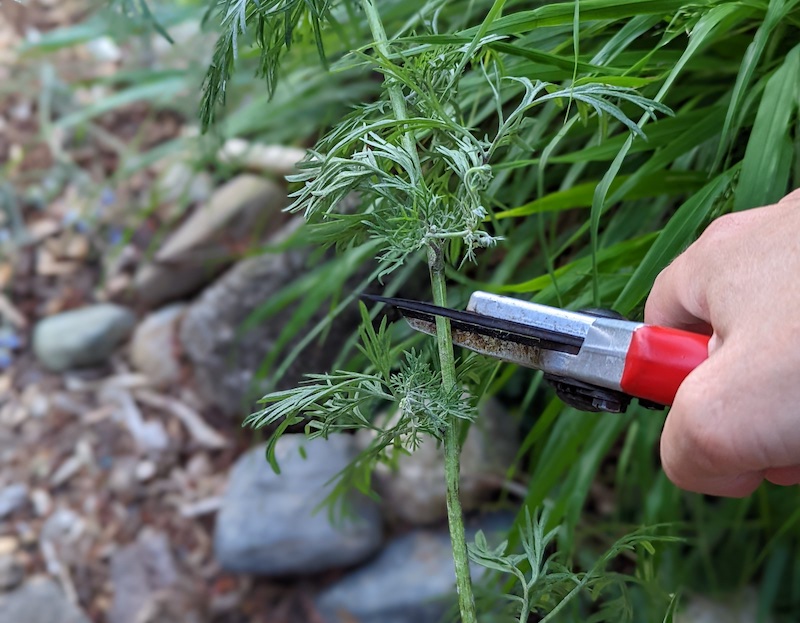Larkspur is the common name for the perennial Delphinium. This perennial is cold hardy and herbaceous, meaning that it dies all of the way back in the fall and spends the winter in dormancy. The new growth emerges early in the spring and grows quickly into a mature plant ready to bloom late in the spring and early summer. Most cultivars of Larkspur are easily grown in zones from 3-7. Parts of zone 8 may be able to grow Larkspur if they have cool, damp springs like the Pacific Northwest.

Protecting Larkspur in Winter
Protecting Larkspur for the winter does not need to be complicated. Insulating the root system and crown of the plant along with keeping the plant from standing in waterlogged, cold soil are the two most important things to keep in mind. Depending on your hardiness zone, the top growth will be either removed in the fall or left on until later in the winter or even early spring. Mulching well with a material such as straw or organic compost will help to give extra insulation to the crown as well as hold moisture in the soil in climates that may be dry during the winter.
Cutting Back Larkspur For Winter
Cutting the spent top growth can be done either in the fall or late in the winter. If you garden in the colder hardiness zones (3-5), cleaning up the plants in the fall is a good idea. Cut the stems down to an inch or 2 from the soil surface and mulch heavily with straw or arborist chips. This mulch will trap air around the root zone and insulate the crown before any snow falls.
Cutting plants back in late winter as part of the annual cleanup works nicely in the warmer zones. The spent plant material will act as insulation during the more mild winters of these zones. No matter where you garden, make sure to remove heavy mulching from the top of the plant before new growth emerges. Larkspur will need air and light early in the spring to produce healthy shoots.

Larkspur Winter Care in Pots
Larkspur planted in containers are easily protected for the winter. When possible, move the pots to a sheltered area that will still receive natural rainfall, but out of the path of prevailing winds and winter storms. If the planters are too large to move, make sure that they do not sit in standing water during the winter. Placing bricks or pot feet under the container helps to raise it and maintain good drainage. There is no need to continue watering once the soil freezes after a hard freeze. Do not resume watering until the spring, when new shoots emerge.
Watering Larkspur in Winter
Larkspur should be kept well watered through the fall until the first hard freeze. After this, a thick mulch of straw or compost around the root zone will conserve enough moisture for the roots to survive until spring. Once the new shoots begin growing in the spring, you can resume regular watering for the season.

Growing Larkspur Indoors
Larkspur does not need to be brought indoors for the winter. The dormant plant needs a period of cold to prepare for the next growing season. Larkspurs do make lovely cut flowers that dry easily and can be displayed through the winter. When cutting flowers to dry, make sure that ¾ of the blooms are fully open with just a few buds at the top still closed. Hanging loose bunches of bloom stems in a shady spot with good air circulation is the best way to preserve the deep color of Larkspur for the season.
Steps To Care For Larkspur in Winter
Larkspurs are beautiful and dramatic flowers that demand high maintenance during the growing season but are deceptively easy to care for over the winter.
Step 1 - Continue to water Larkspur in the fall until the ground freezes.
Step 2 - Cut back all of the spent plant material to the ground in the fall and mulch the crown heavily with straw or compost.
Step 3 - Gardeners in warmer gardening zones can leave the cleanup of old stems until spring, letting the plant material act as the mulch.
Step 4 - Remove mulch from the crown as new growth starts in the spring.
Step 5 - Resume watering as new growth starts in the spring.
 |
Author Robbin Small - Published 8-22-2022 |
